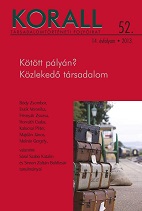Modellváltás a református lelkésznéi szerep értelmezésében az 1870-es és az 1930-as évek között
New Models in the Interpretation of the Role of Clergymen’s Wives in the Reformed Church between the 1870s and 1930s
Author(s): Katalin Sárai SzabóSubject(s): History
Published by: KORALL Társadalomtörténeti Egyesület
Summary/Abstract: The study explores the model change that transformed the role of protestant clergymen’s wives at the beginning of the twentieth century. The traditional ideals for women married to pastors was primarily concerned with their role within their own families to present an example for the congregation. The new model emerging at the beginning of the twentieth century faced changing expectations in close association with the social changes taking place in the period, as well as the ecclesiastical reform movements of the time, such as home mission. The new ideal for clergymen’s wives was to become an important figure in the life of the church, and one of their new tasks was to lead and guide female communities. The church intended to support this new role by founding an organisation (National Federation of Wives of Protestant Clergymen), which aimed to create and build the group identity of clergy wives. The process of change in the role of clergy wives can be interpreted as a unique professionalisation process, whereby these women did not become paid professionals of an occupation, but underwent a special process of building a new consciousness. However, the main duty of clergy wives remained the provision of assistance for the increasingly voluminous and complex duties of their husbands, regardless of the women’s education, which, after 1917, often entailed a theological degree. While their status continued to be determined by their husbands’ office, from the beginning of the twentieth century they are seen to make increasing efforts to build their own prestige. This can be interpreted as a form of a female emancipation attempt and an example of awakening self-identification.
Journal: Korall - Társadalomtörténeti folyóirat
- Issue Year: 2013
- Issue No: 52
- Page Range: 187-214
- Page Count: 28
- Language: Hungarian

